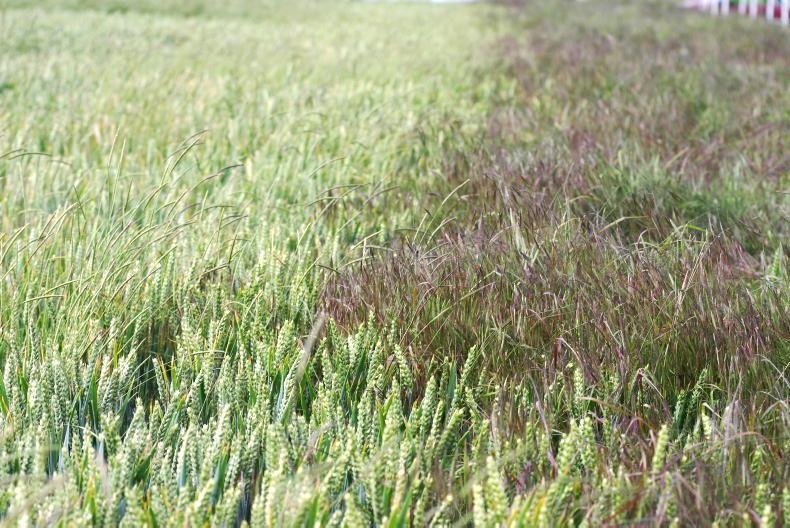The Department of Agriculture has told the Irish Farmers Journal that the spot spraying of problem grass weeds such as blackgrass, sterile brome and canary grass in the 3m buffer beside a watercourse is not allowed.
Tillage farmers saw the 2m buffer at watercourses extended to 3m this season under the new CAP and the definition of a watercourse also saw the number of these buffers created on farms increase significantly, taking more land out of production.
While these buffers are in place to protect water, a major problem that they create is that grass weeds cannot be controlled in the 3m margin.
Responding to a query about the control of grass weeds in these buffers, the Department stated: “For GAEC 4, a minimum 3m buffer zone must be respected where pesticides cannot be applied, therefore grass weeds within this zone cannot be sprayed and must be controlled by alternative means.”
This creates a real risk of grass weeds getting out of control. The only other means of control would be to pull the weed, which will be very hard in the summertime. Cutting will encourage tillering and could increase the weed problem.
Possible change to the rule
However, the Department did state that it was working on changing the rules to allow herbicide use on these grass weeds to be allowed in certain situations.
A statement to the Irish Farmers Journal noted: “The Department of Agriculture, Food and the Marine is considering very limited situations where the control of very specific plant species under national or union Legislation (e.g. Regulation (EU) 1143/2014 or Regulation (EU) 2016/2031) may not be possible by alternative means.”
It should be noted that animals do not need to be fenced along a watercourse, unless the farm has a grassland stocking rate of over 170kg N/h, in which case that fence only needs to be 1.5m from the bank at a watercourse.
Tillage farmers need to leave a 3m area which is uncultivated and does not receive fertiliser or pesticides.






 This is a subscriber-only article
This is a subscriber-only article










SHARING OPTIONS: